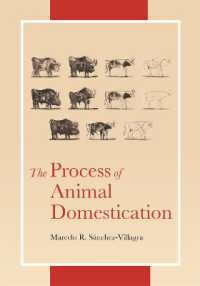Full Description
Since the first translations of Lewis Carroll's Alice books appeared in Japan in 1899, Alice has found her way into nearly every facet of Japanese life and popular culture. The books have been translated into Japanese more than 500 times, resulting in more editions of these works in Japanese than any other language except English. Generations of Japanese children learned English from textbooks containing Alice excerpts. Japan's internationally famous fashion vogue, Lolita, merges Alice with French Rococo style. In Japan Alice is everywhere—in manga, literature, fine art, live-action film and television shows, anime, video games, clothing, restaurants, and household goods consumed by people of all ages and genders. In Alice in Japanese Wonderlands, Amanda Kennell traverses the breadth of Alice's Japanese media environment, starting in 1899 and continuing through 60s psychedelia and 70s intellectual fads to the present, showing how a set of nineteenth-century British children's books became a vital element in Japanese popular culture.
Using Japan's myriad adaptations to investigate how this modern media landscape developed, Kennell reveals how Alice connects different fields of cultural production and builds cohesion out of otherwise disparate media, artists, and consumers. The first sustained examination of Japanese Alice adaptations, her work probes the meaning of Alice in Wonderland as it was adapted by a cast of characters that includes the "father of the Japanese short story," Ryūnosuke Akutagawa; the renowned pop artist Yayoi Kusama; and the best-selling manga collective CLAMP. While some may deride adaptive activities as mere copying, the form Alice takes in Japan today clearly reflects domestic considerations and creativity, not the desire to imitate. By engaging with studies of adaptation, literature, film, media, and popular culture, Kennell uses Japan's proliferation of Alices to explore both Alice and the Japanese media environment.








